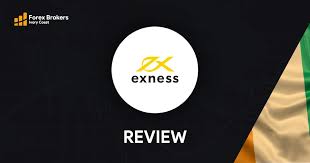
Understanding Competitive Exness Fees
For many traders, the cost of trading can significantly influence their overall profitability. One of the key factors impacting trading costs is the broker’s fee structure. In this article, we will delve into the competitive Exness fees https://fabiolazzara.it/2025/05/20/chto-takoe-kompensacija-exness-i-pochemu-ona-tak-7/ and how they compare to other brokers in the market.
What are Exness Fees?
Exness, a notable player in the forex brokerage arena, offers various trading services and products, including forex pairs, cryptocurrencies, commodities, and more. One of the pivotal aspects that attract traders to Exness is its competitive fee structure designed to cater to different trading styles, including scalping and long-term investing.
Types of Fees
Exness typically charges several types of fees, including spreads, commissions, and withdrawal charges. Understanding these fees is vital for traders who wish to maximize their profit margins.
1. Spreads
The spread is the difference between the buying price and the selling price of an asset. Exness offers both fixed and variable spreads, with the latter often being more competitive in volatile market conditions. For major currency pairs like EUR/USD, spreads can start as low as 0.0 pips during peak trading hours, which is exceptionally competitive.
2. Commissions
While many brokers charge a flat commission per trade, Exness offers a unique model where the commission structure varies based on the account type. For instance, the ECN account holders might face a commission per lot traded, making it essential for traders to choose the right account type that aligns with their trading habits.
3. Withdrawal Fees
Unlike many other brokers who impose hefty withdrawal fees, Exness has managed to create a more trader-friendly environment. Most withdrawal methods are free of charge, which enhances the overall trading experience. However, traders should be aware that certain payment systems may incur fees, depending on the provider.
Comparison with Other Brokers

To ascertain whether Exness’s fees are truly competitive, it is essential to compare them with fees charged by other brokers in the industry. Many brokers present misleading ‘no commission’ options that compensate for it through wider spreads. On the other hand, Exness maintains transparency in its fee structure, ensuring traders understand what they are paying for.
Traders should conduct thorough research on brokers, looking at their fee structures, execution speeds, and trading platforms before making a decision. In many cases, Exness stands out for offering lower costs, especially for high-frequency traders.
How to Minimize Trading Fees
Understanding how to reduce trading costs can greatly enhance profitability. Here are some strategies to minimize fees associated with trading on Exness:
1. Choose the Right Account Type
As previously mentioned, Exness offers multiple account types, each with distinct fee structures. Scalpers might benefit from accounts with lower spreads, while long-term traders may prefer fixed spreads for better predictability.
2. Leverage Market Hours
By trading during peak hours when spreads tend to be tighter, traders can avoid wider spreads that occur during off-hours. Understanding market dynamics is crucial for optimizing trading costs.
3. Utilize Promotions and Bonuses
Exness occasionally offers promotions and bonuses that can help reduce the cost of trading. Keeping an eye on these offers can lead to better trading conditions, effectively lowering fees.
Conclusion
In conclusion, understanding competitive Exness fees is essential for traders looking to optimize their trading experience. By evaluating different fee structures, selecting the appropriate account type, and employing strategic trading practices, traders can significantly reduce their overall trading costs. Being well-informed is the key to achieving long-term success in trading.
As the financial markets continue to evolve, with Exness staying at the forefront, it’s crucial for traders to remain vigilant about fee structures and to leverage competitive advantages whenever possible. With the right approach, trading can be both profitable and cost-effective.


Comment closed!